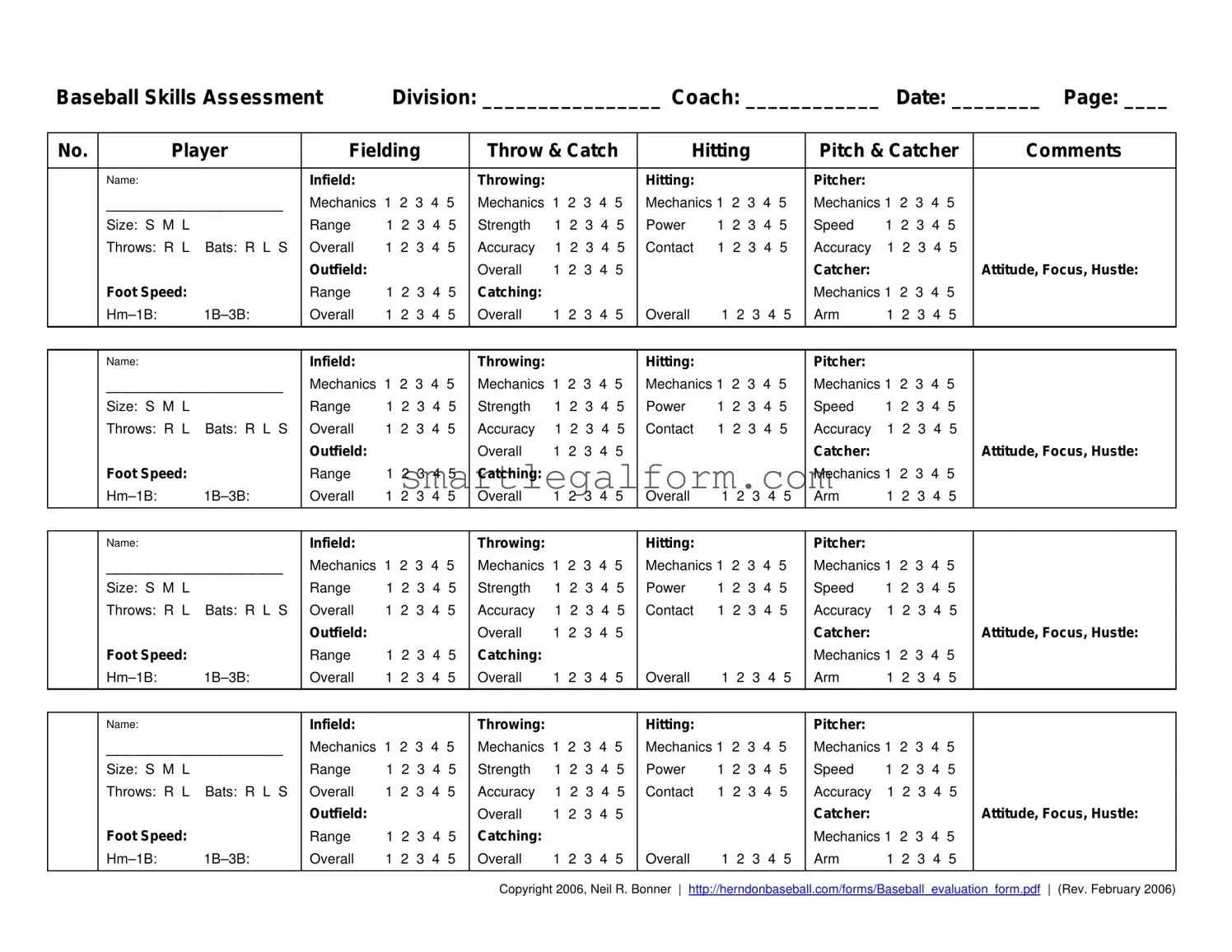Completing the Baseball Assessment form can be a straightforward task, but many people make common mistakes that can affect the evaluation process. One frequent error is failing to provide complete information in the designated fields. For instance, leaving the player’s name, division, or coach’s name blank can create confusion. It is essential to fill in all relevant sections to ensure that the assessment is clear and comprehensive.
Another mistake often seen is not using the correct scoring system. The form employs a five-point scale, yet evaluators sometimes assign scores without understanding what each number represents. For example, a score of one indicates an extremely poor level of ability, while a five signifies exceptional talent. Misunderstanding this scale can lead to inaccurate evaluations, impacting player selections.
In addition, some evaluators neglect to provide comments in the designated section. Comments are vital as they offer context to the scores given. Simply writing “good” or “needs improvement” does not help coaches understand a player’s strengths or areas for growth. Detailed feedback can be invaluable for future training and player development.
Another common oversight is the lack of attention to the mechanics of each skill being assessed. Coaches may score a player’s overall performance without considering the individual mechanics of fielding, throwing, or hitting. This approach can overlook specific areas that require improvement, leading to a less effective evaluation.
Additionally, some evaluators fail to adjust scores based on a player’s attitude, focus, and hustle. These attributes are crucial in baseball, as they can significantly influence a player's performance. Coaches should remember to consider these factors when assigning scores, as they reflect a player’s commitment and potential for growth.
Lastly, many people forget to double-check their work before submitting the form. Simple mistakes, such as misplacing scores or failing to sign the form, can lead to unnecessary complications. Taking a moment to review the completed assessment can prevent these errors and ensure that the evaluation process runs smoothly.

